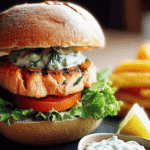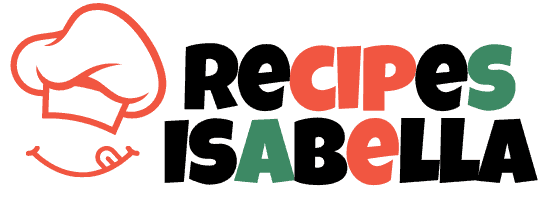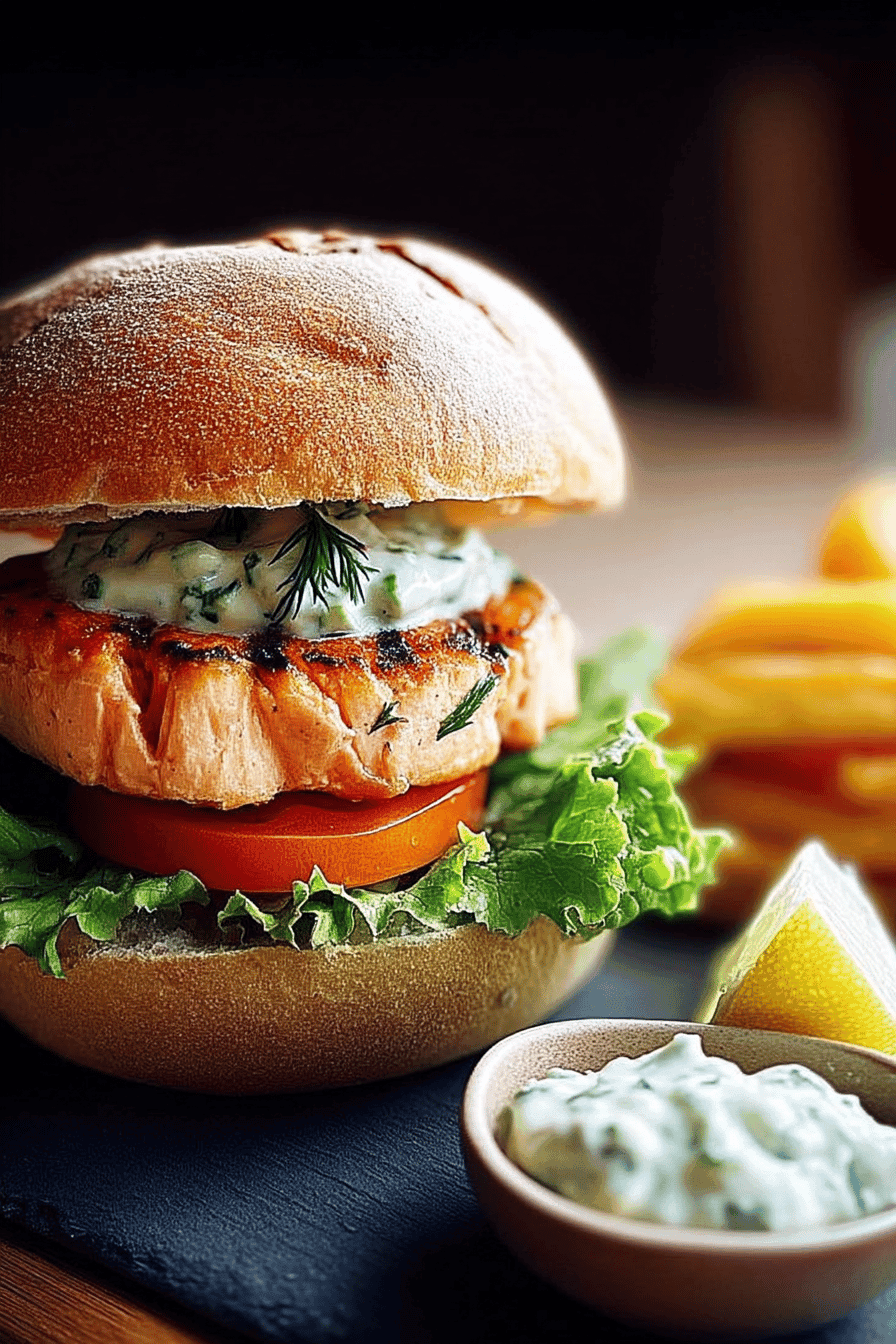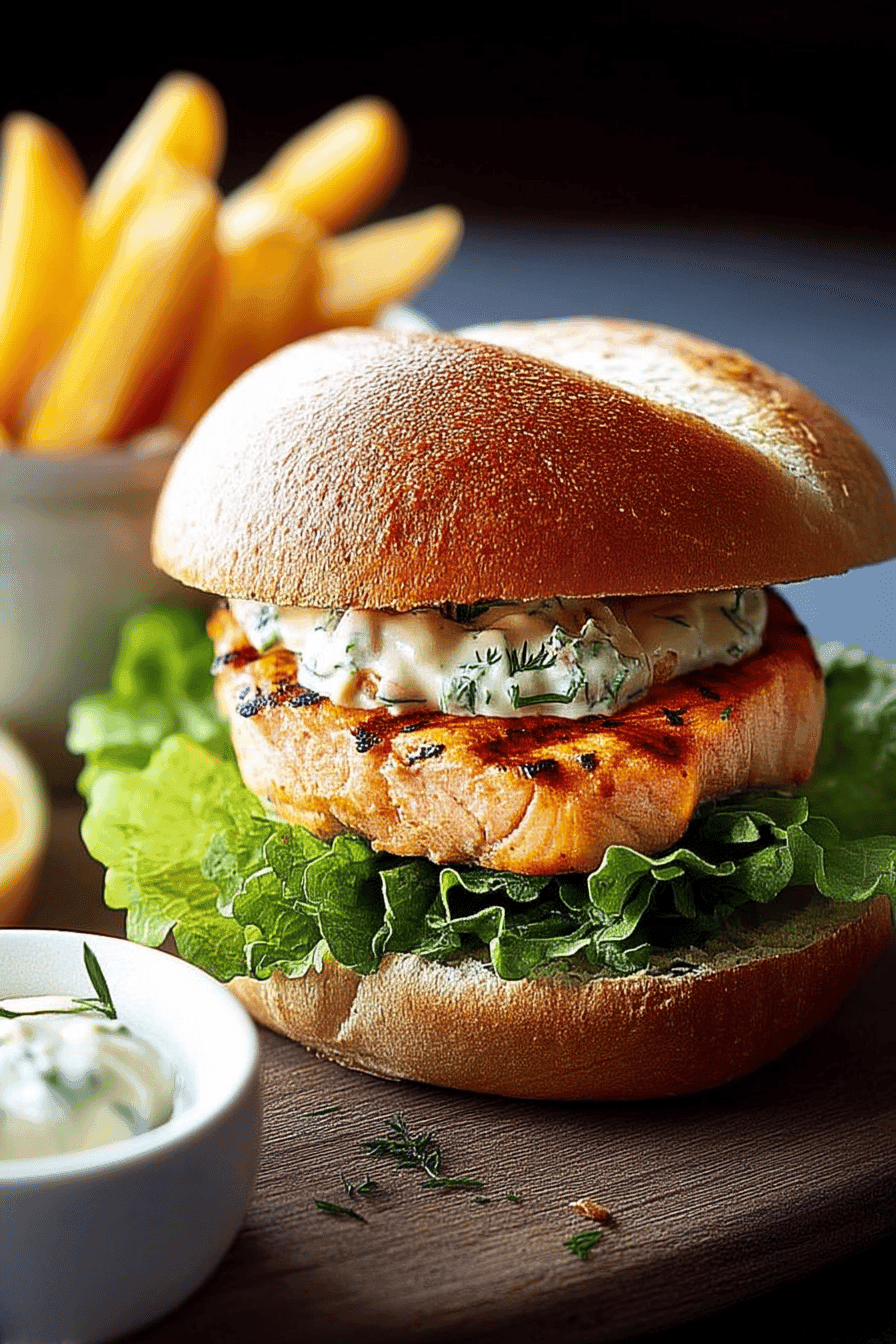Benefits and Advantages of Salmon Burgers
Salmon burgers offer a seamless blend of convenience and nutrition, making them an ideal choice for anyone seeking a quick yet healthy meal. Their simple preparation fits well within busy schedules, taking approximately 20 minutes to prepare. These burgers are exceptionally rich in omega-3 fatty acids, which are known to support heart health and improve brain function, setting them apart from traditional red meat patties.
They naturally contain less saturated fat, which contributes to a healthier diet by supporting better cholesterol levels. Salmon burgers are highly adaptable, allowing you to add fresh herbs, spices, or regional flavorings without increasing unhealthy ingredients. Using fresh salmon ensures a juicy, moist texture, delivering a pleasant eating experience every time you bite into one.
Their suitable profile for gluten-free, low-calorie, and even vegan adaptations expands their appeal to a diverse range of dietary needs.
Salmon burgers stand out as a tasty, nutritious meal that fits perfectly with health-conscious lifestyles.
For a detailed look at the health benefits of eating salmon, explore this comprehensive resource.
Jump To
- 1. Benefits and Advantages of Salmon Burgers
- 2. Essential Ingredients for Salmon Burgers
- 3. Dietary Substitutions to Customize Your Salmon Burgers
- 4. How to Prepare the Perfect Salmon Burgers: Step-by-Step Guide
- 5. Advanced Tips and Variations
- 6. How to Store Salmon Burgers: Best Practices
- 7. Nutritional Value of Salmon Burgers
- 8. FAQs: Frequently Asked Questions About Salmon Burgers
- 9. salmon burgers
Essential Ingredients for Salmon Burgers
The flavor and structure of salmon burgers rely on a careful combination of fresh ingredients. Below is a comprehensive list needed for preparing classic salmon burgers:
- 1½ pounds (about 680 grams) skinless, boneless salmon
- 2 teaspoons Dijon mustard
- 2 shallots, peeled and cut into chunks
- ½ cup (about 60 grams) coarse or panko bread crumbs (alternatives: rolled oats, whole wheat breadcrumbs, almond flour for gluten-free)
- 1 tablespoon capers, drained (optional)
- Salt and black pepper, to taste
- 2 tablespoons butter or olive oil, for cooking
- Lemon wedges, for serving
- Tabasco sauce or preferred sauce (optional)
Optional ingredients to tailor the flavor include:
- About ¼ cup chopped fresh herbs (parsley, dill, chives, or cilantro)
- Garlic powder or finely chopped garlic
- Lemon zest and juice (from 1 lemon)
- Spices like crushed red pepper flakes, ginger, lemongrass, or scallions for regional flavor
| Ingredient | Function in Recipe |
|---|---|
| Salmon | Main protein and source of omega-3 fatty acids |
| Dijon mustard | Flavor enhancer and mild binder |
| Shallots | Add sweetness and aromatic depth |
| Bread crumbs or substitutes | Bind ingredients and add texture |
| Capers (optional) | Add salty tang |
| Butter or olive oil | Used for cooking and adding healthy fats |
Dietary Substitutions to Customize Your Salmon Burgers
Salmon burgers can easily be adjusted to meet a variety of dietary needs by swapping some ingredients while retaining taste and texture:
Gluten-Free Adjustments
- Use gluten-free bread crumbs or almond flour as a binder to replace conventional breadcrumbs, maintaining structure and flavor.
- Certified gluten-free rolled oats also work well.
Vegan and Vegetarian Options
- Replace salmon with mashed chickpeas, tofu, or tempeh for a plant-based patty.
- Use flaxseed or chia seeds mixed with water as an egg substitute to bind ingredients.
- Vegetarian versions can substitute dairy-based sauces with vegan-friendly spreads or dressings.
Low-Calorie Choices
- Swap traditional bread crumbs for whole wheat panko or ground oats to reduce calorie intake.
- Use olive oil instead of butter to lower saturated fat content.
- Serve with yogurt-based dressings or other light sauces instead of heavy mayonnaise.
Flavor Without Extra Salt or Calories
- Minimize salt by using fresh herbs, lemon juice, and zest to brighten flavors.
- Incorporate spices like smoked paprika or cumin to add depth without extra calories.
Such substitutions make salmon burgers accessible to many dietary preferences without compromising the delicious flavors. To complement your salmon burger, consider serving a crisp, tangy slaw or a fresh salmon salad such as the recipe found on Fresh Healthy Salmon Salad.
How to Prepare the Perfect Salmon Burgers: Step-by-Step Guide
Step 1: Prepare the Salmon
Start by cutting 1½ pounds of skinless, boneless salmon into large chunks. Process about one-quarter of the fish with 2 teaspoons of Dijon mustard in a food processor until it forms a smooth paste.
Step 2: Combine Ingredients in the Food Processor
Add 2 peeled and chunked shallots and the remaining salmon pieces to the food processor. Pulse until the mixture is well blended but still retains a slightly coarse texture to keep the patties moist and tender.
Step 3: Mix Binding Ingredients by Hand
Transfer the salmon mixture to a bowl. Stir in ½ cup of coarse or panko bread crumbs (or gluten-free alternatives), 1 tablespoon drained capers (optional), salt, and black pepper. Add optional herbs, lemon zest and juice, or spices you prefer.
If the mixture feels too wet, gradually add more bread crumbs or rolled oats to achieve a consistency that holds together well.
Step 4: Form and Chill Patties
Shape the mixture into four evenly sized patties, about three-quarters of an inch thick. Refrigerate for 20 minutes to help them firm up, which makes cooking easier and prevents falling apart.
Step 5: Cook the Burgers
Heat 2 tablespoons of butter or olive oil in a nonstick skillet over medium-high heat. Cook patties for 2 to 3 minutes per side, flipping once, until golden brown on the outside but still tender and slightly pink inside.
Alternatively, grill the patties: cook for 4 minutes on the first side until firm, then flip and cook 1 to 2 minutes more. Avoid overcooking to maintain juiciness.
Step 6: Serve
Serve the salmon burgers on buns or on a bed of fresh greens. Garnish with lemon wedges and your favorite sauces such as Tabasco, wasabi-ginger-lime mayo, or a yogurt-based dressing for a balanced, flavorful meal.
| Step | Instructions |
|---|---|
| 1 | Cut salmon and blend part with Dijon mustard |
| 2 | Pulse shallots and remaining salmon until coarse |
| 3 | Mix in bread crumbs, capers, and seasonings |
| 4 | Shape into patties and chill 20 minutes |
| 5 | Cook in skillet or grill until golden and just cooked |
Patience during chilling and gentle handling while cooking will help you make salmon burgers that hold together with great texture.
For more helpful cooking tips, see this how to cook the perfect salmon burger guide and tips to enhance flavor in seafood burgers.
Advanced Tips and Variations
For optimal results, use wild-caught salmon for a richer flavor and firmer texture in your salmon burgers. Avoid overmixing the ingredients to maintain a light, flaky consistency rather than a dense patty. Incorporate finely diced vegetables such as bell peppers or zucchini for added moisture and nutrition. Experiment with spices like dill, paprika, or cumin to create unique flavor profiles. Consider adding a crunchy element like toasted nuts or seeds to the mixture for texture contrast. For a smoky twist, grill the patties over charcoal or add smoked paprika to the seasoning. Variations include blending salmon with crab meat for a seafood medley or using different binders such as mashed sweet potatoes for a gluten-free, nutrient-rich option. These tips and variations ensure each salmon burger experience is both flavorful and suited to a variety of tastes and dietary needs, encouraging creativity and customization.
How to Store Salmon Burgers: Best Practices
To store salmon burgers, refrigerate cooked patties in an airtight container for up to three days to maintain freshness and prevent contamination. For longer storage, freeze the patties individually on a baking sheet until firm, then transfer them to a freezer-safe bag or container to avoid sticking. This method allows you to preserve the patties for up to three months. When ready to use, thaw refrigerated patties in the fridge overnight or use the defrost function on your microwave. Reheat by pan-frying on medium heat or baking in the oven until warmed through, ensuring they remain moist and flavorful. Avoid overheating to prevent dryness. Proper storage techniques extend the shelf life of your salmon burgers while preserving taste and texture, making meal prep convenient and safe.
Nutritional Value of Salmon Burgers
A typical salmon burger provides approximately 250-300 calories per serving, rich in high-quality protein essential for muscle repair and growth. The omega-3 fatty acids abundant in salmon contribute to cardiovascular health and cognitive function. Fat content generally ranges around 15 grams, predominantly heart-healthy unsaturated fats, with minimal saturated fat. Salmon burgers are also a good source of vitamins and minerals including vitamin D, B12, selenium, and potassium. Choosing gluten-free or low-calorie ingredient alternatives can further tailor the nutritional profile. These burgers offer a balanced macro-nutrient composition, making them an ideal choice for a nutritious meal. Their nutrient density supports a healthy lifestyle and dietary goals without compromising flavor or satisfaction.
FAQs: Frequently Asked Questions About Salmon Burgers
Can I use raw salmon to make salmon burgers or should it be cooked first?
For salmon burgers, it’s best to start with cooked salmon. Using cooked salmon—either canned or fresh that’s been fully cooked and flaked—helps achieve the right texture and flavor. Raw salmon contains more moisture, which can make the patties fall apart and harder to bind. If you prefer fresh salmon, cook it by baking, grilling, or pan-searing before mixing it with the other ingredients.
How can I stop my salmon burgers from falling apart when cooking?
To keep salmon burgers intact, drain any excess liquid from the salmon thoroughly before mixing the ingredients. Adding binders like egg and breadcrumbs (panko or gluten-free options) helps hold the patties together. Handle the patties gently while forming and flipping them in the pan or on the grill, and avoid pressing down too hard, which can cause them to break.
What is the best way to store and reheat leftover salmon burgers?
Store leftover salmon burgers in an airtight container in the refrigerator for up to 3-4 days. For longer storage, freeze the patties, uncooked or cooked, for up to 3 months. To reheat, warm them in a skillet over medium heat with a little oil, flipping occasionally until heated through. Avoid microwaving, as it can make the texture rubbery.
Are salmon burgers suitable for gluten-free or dairy-free diets?
Yes, salmon burgers can be easily adapted for gluten-free or dairy-free diets. Substitute regular breadcrumbs with gluten-free breadcrumbs or almond flour to keep the patties gluten-free. For a dairy-free option, replace Greek yogurt with mayonnaise or your favorite dairy-free sauce. These swaps maintain flavor and texture without compromising the recipe’s quality.
Can I cook salmon burgers on the grill, and what should I keep in mind?
Salmon burgers can be grilled successfully. Make sure to preheat the grill and oil the grates well to prevent sticking. Handle the patties carefully when placing them on the grill and when flipping. Cooking times may vary but aim for an internal temperature of at least 160°F to ensure food safety. Grilling adds a smoky flavor and a nice charred texture to the burgers.

salmon burgers
- Total Time: 26 minutes
- Yield: 4 burgers 1x
- Diet: Pescatarian
Description
🐟 Salmon burgers are packed with omega-3 fatty acids and high-quality protein, making them a nutritious choice for a wholesome meal.
🍔 These burgers are easy to prepare and customizable, delivering juicy flavor and a satisfying texture with simple ingredients.
Ingredients
1½ pounds (about 680 grams) skinless, boneless salmon
2 teaspoons Dijon mustard
2 shallots, peeled and cut into chunks
½ cup (about 60 grams) coarse or panko bread crumbs (alternatives: rolled oats, whole wheat breadcrumbs, almond flour for gluten-free)
1 tablespoon capers, drained (optional)
Salt and black pepper, to taste
2 tablespoons butter or olive oil, for cooking
Lemon wedges, for serving
Tabasco sauce or preferred sauce (optional)
About ¼ cup chopped fresh herbs (parsley, dill, chives, or cilantro)
Garlic powder or finely chopped garlic
Lemon zest and juice (from 1 lemon)
Spices like crushed red pepper flakes, ginger, lemongrass, or scallions for regional flavor
Instructions
Step 1: Prepare the Salmon
Start by cutting 1½ pounds of skinless, boneless salmon into large chunks. Process about one-quarter of the fish with 2 teaspoons of Dijon mustard in a food processor until it forms a smooth paste.
Step 2: Combine Ingredients in the Food Processor
Add 2 peeled and chunked shallots and the remaining salmon pieces to the food processor. Pulse until the mixture is well blended but still retains a slightly coarse texture to keep the patties moist and tender.
Step 3: Mix Binding Ingredients by Hand
Transfer the salmon mixture to a bowl. Stir in ½ cup of coarse or panko bread crumbs (or gluten-free alternatives), 1 tablespoon drained capers (optional), salt, and black pepper. Add optional herbs, lemon zest and juice, or spices you prefer.
If the mixture feels too wet, gradually add more bread crumbs or rolled oats to achieve a consistency that holds together well.
Step 4: Form and Chill Patties
Shape the mixture into four evenly sized patties, about three-quarters of an inch thick. Refrigerate for 20 minutes to help them firm up, which makes cooking easier and prevents falling apart.
Step 5: Cook the Burgers
Heat 2 tablespoons of butter or olive oil in a nonstick skillet over medium-high heat. Cook patties for 2 to 3 minutes per side, flipping once, until golden brown on the outside but still tender and slightly pink inside.
Alternatively, grill the patties: cook for 4 minutes on the first side until firm, then flip and cook 1 to 2 minutes more. Avoid overcooking to maintain juiciness.
Step 6: Serve
Serve the salmon burgers on buns or on a bed of fresh greens. Garnish with lemon wedges and your favorite sauces such as Tabasco, wasabi-ginger-lime mayo, or a yogurt-based dressing for a balanced, flavorful meal.
Notes
🐟 Grinding part of the salmon finely helps the burger hold together, while leaving some chunks maintains moisture and texture.
🧼 Ensure salmon is well-drained before mixing to avoid soggy patties.
🍞 If patties are fragile, add extra bread crumbs or panko to improve binding.
- Prep Time: 20 minutes
- Chilling time (optional): 10 minutes
- Cook Time: 6 minutes
- Category: Main Dish
- Method: Pan-frying or grilling
- Cuisine: American
Nutrition
- Serving Size: 1 burger
- Calories: 320 kcal
- Sugar: 1 g
- Sodium: 350 mg
- Fat: 18 g
- Saturated Fat: 4 g
- Unsaturated Fat: 10 g
- Trans Fat: 0 g
- Carbohydrates: 15 g
- Fiber: 2 g
- Protein: 30 g
- Cholesterol: 70 mg
Keywords: salmon, burgers, seafood, healthy



Tried the salmon burger recipe last night, and it was fantastic! Even my kids, who are usually not fans of fish, loved it. I added a bit of dill to the patties, and it added a nice touch of freshness. 🍔🐟
★★★★★